Speaker
Description
Sunet Drive is a national file storage infrastructure for universities and research institutions in Sweden. It is based on a Nextcloud Global Scale setup and is comprised of 54 nodes, one prepared for each institution. This setup ensures data sovereignty while being part of a larger federation, including the ScienceMesh for international collaboration. The setup is duplicated in a test environment which is also used for staging and development. In total, around 300 virtual servers are deployed, including nodes and applications setup using kubernetes.
One step in ensuring the functional stability of such a large setup is rigorous and automated testing, which has been identified as one of seven critical success factors (CSFs) that represent continuous practice. Strategic test automation where tests are continuously adapted and executed based on requirements complements traditional IT monitoring solutions, and provides a viable strategy for testing in an industrial-grade DevOps project. This covers basic tests of the status pages comparing expected values with actual values. Functionally, user life cycle management, app-consistency and WebDAV are tested, as well as more sophisticated Selenium testing for login, multi-factor authentication, document editing, and more. Automated testing generates around 30000 daily test points, ensuring the stability and consistency of the deployed solution. Scalability and load testing is done using a setup that can simulate the load from many users, and has been used to test for up to 6000 users.
The presentation covers all stages of the application life cycle. While you model your IT-system, integrate applications and components, you scale and expand it to a global scale. The fundamental question arising from this is "Does it really work all the time?" You start by writing tests that systematically cover core functionality promised to the end users. Automating these tests, e.g., by using pipelines, you continuously test your solution.
We will guide the audience through the whole test automation pipeline, including the technical setup required, such as Jenkins with multiple workers and X virtual frame buffer (Xvfb) for testing in virtual desktop environments. Challenges reducing the test execution times via multi-threaded test execution will be discussed, as well as trade-offs in test coverage. Eventually, you want to validate functional stability for your end users rather than replicating regression testing that should be covered by the software suppliers.
Continuous testing is an important tool that can be used as a complement to conventional infrastructure monitoring. It ensures functional consistency throughout the life cycle of hosted IT solutions.
